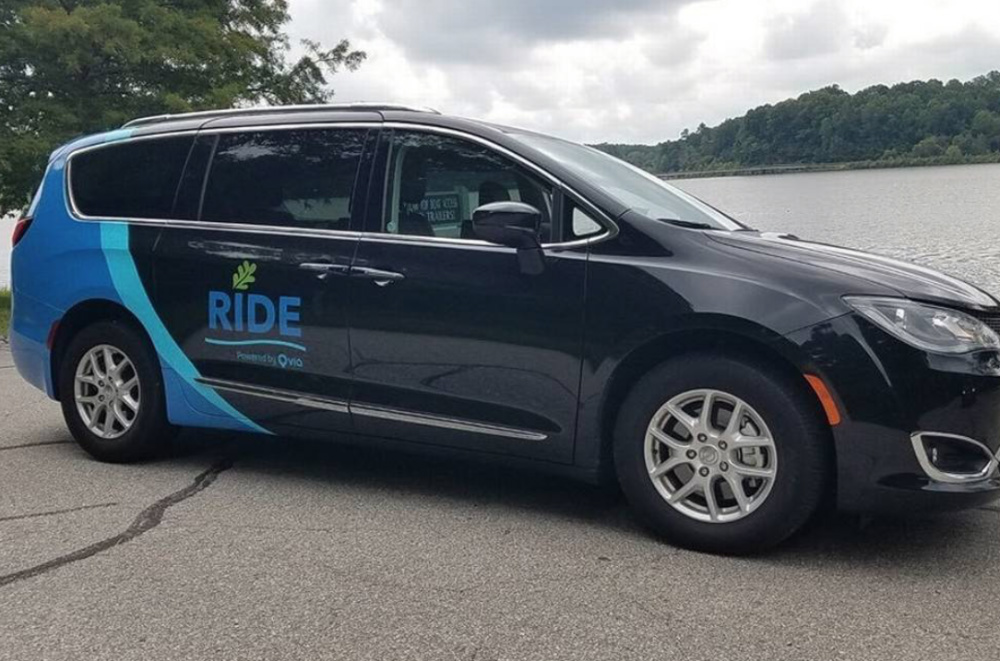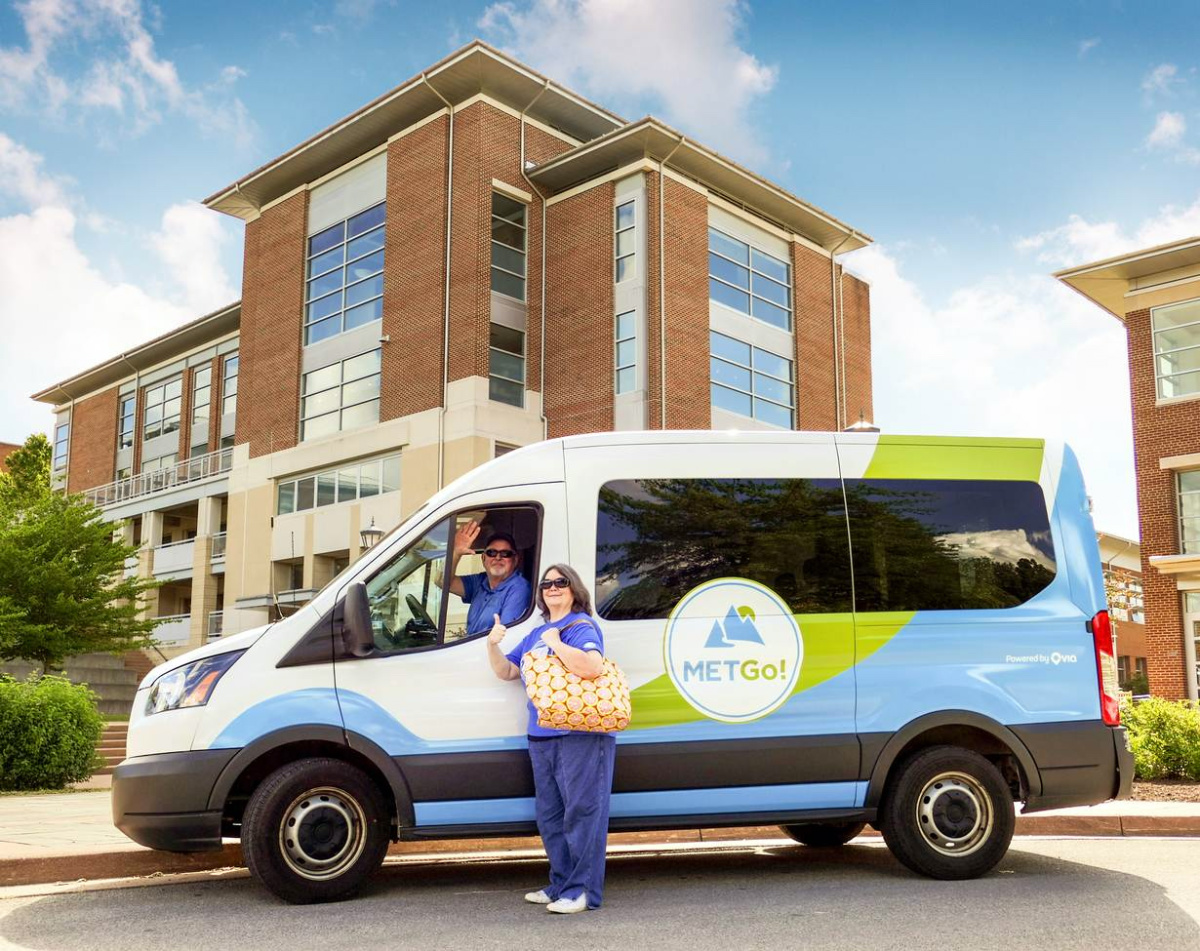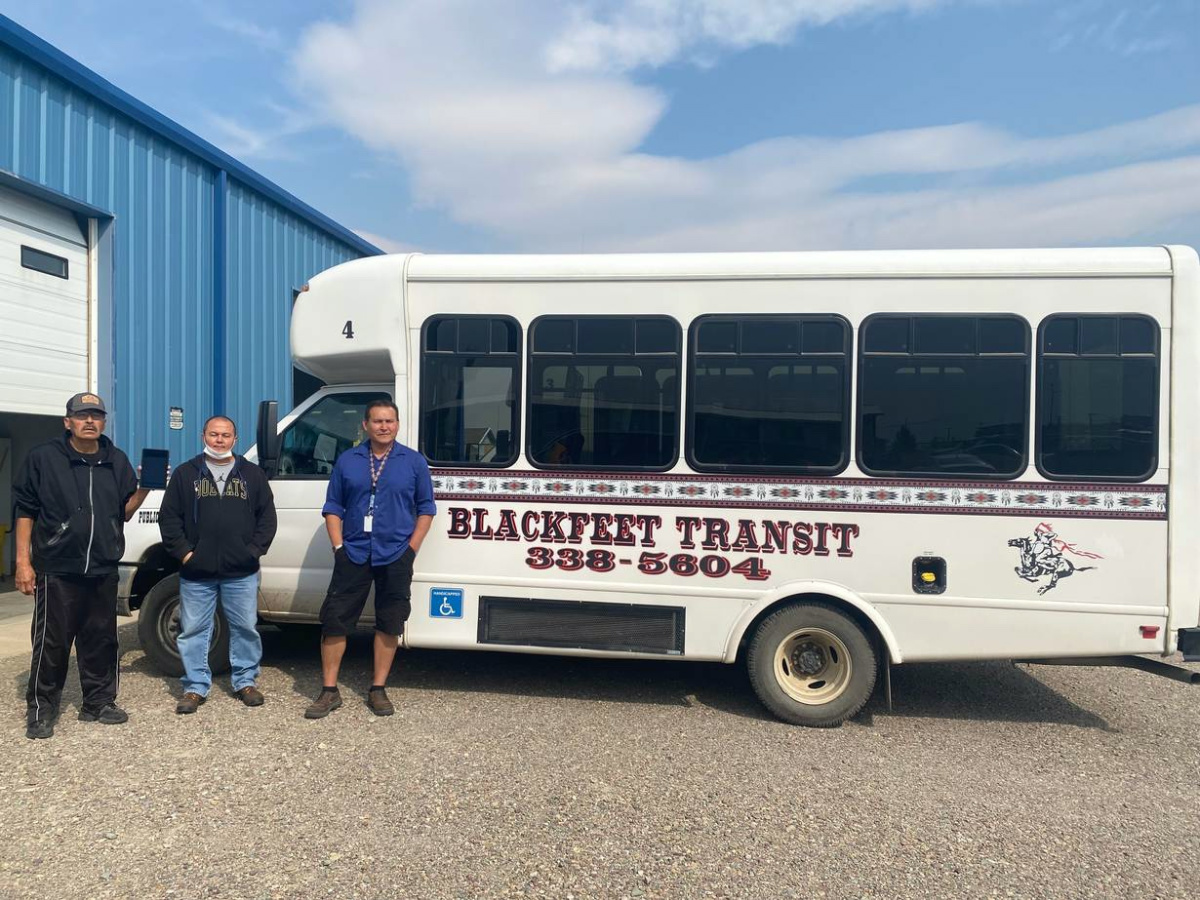
DAVID SHERFINSKI, of Thomson Reuters Foundation, reports on how on-demand ‘microtransit’ services are expanding from cities to more rural parts of the United States, offering an affordable means of transport for vulnerable residents…
Washington DC, US
Thomson Reuters Foundation
Unable to drive due to a medical condition, Patricia Robinson had been missing doctor’s appointments and felt isolated without another means of transport near her home in the US state of North Carolina.
But today, thanks to an on-demand ride-sharing service that launched in the small city of Wilson in late 2020, she has a way to get to the doctor and ensure her two daughters can participate in school-related activities.
“It’s been a blessing for me to get from point A to point B,” Robinson, 35, said by phone. “[Before] I wouldn’t go nowhere. I would be stuck in the house, struggling, not being able to get my medication.”

Vehicle for Wilson, North Carolina’s RIDE, an on-demand transit service. PICTURE: Courtesy Via/RIDE.
Robinson uses RIDE, one of a number of affordable, on-demand “microtransit” initiatives that are expanding from major US cities to more rural parts of the country, from Wilson to the Blackfeet Indian Reservation in Montana.
Advocates say such services can play a key role in providing transport to vulnerable residents of so-called “transit deserts”, though past experiments have shown the programs can become victims of their own success by ending up oversubscribed.
“It’s revolutionised the way we do things in this whole region.”
– Will Wright, transit operations director for Mountain Empire Older Citizens, an elderly care and transit agency in south-west Virginia, on the East Coast.
“It’s revolutionised the way we do things in this whole region,” said Will Wright, transit operations director for Mountain Empire Older Citizens, an elderly care and transit agency in south-west Virginia, on the East Coast.
Wright’s group operates METGo!, a microtransit service that offers free rides in parts of rural Wise County, Virginia, where the poverty rate is estimated to top 20 per cent – nearly twice the national rate.
“I expect it to continue to grow and continue and continue and hopefully we can get [service] in every little town that we have,” he said. “I think this is the breeding ground [for] how things will change in the future nationwide.”
The service in Wise, which launched last June as part of a pilot program, has transported more than 12,000 people within about six months – a figure Wright called “astronomical.”
Valeria Reynolds, who works at a local Spero Health clinic, which offers treatment for drug and alcohol addiction, estimated that 95 per cent of patients use the service to access treatment, or to get to work or church, for example.
“People depend on it,” she said. “They don’t have transportation or cars, or can’t afford it…it’s just a huge need here in south-west Virginia.

METGo! vehicle at the University of Virginia’s College at Wise, along with driver Donnie Stidham and former Director of News and Media Relations at UVA-Wise Kathy Still. PICTURE: Courtesy Via/METGo!
Locations including Wise have partnered with corporations such as Via, a company founded in 2012 that manages the tech side of the new services to maximize route and ridership efficiency.
Riders use an app or call a number to hail a vehicle, frequently a wheelchair-accessible van, to transport them at a fraction of the cost of traditional ride-sharing apps.
Some of the early programs are leveraging a combination of state, federal and tribal grant money to help set up the services.
In Wilson, RIDE passengers pay $US1.50 a ride, with discounts available for seniors and people with disabilities. METGo! has been free of charge during the COVID-19 pandemic.
“Our average rider makes less than $US25,000 a year…[if] someone has to pay a $US15-$US20 cab fare, that’s a tremendous amount of money,” said Rodger Lentz, chief planning and development officer with the city of Wilson. “I do think it’s going to grow.”
Across the country in northwest Montana, the Blackfeet Indian Reservation launched its microtransit service with Via last year.
Since partnering with the company, passenger numbers have more than doubled to about 1,150 people per month, said Blackfeet Transit Director Warren Blackman.
The service costs $US1 per ride for adults. More than half of the users are seniors or people with disabilities, who can travel for free.
“That’s kind of the demographic that tends to get forgotten,” Blackman said.

Warren Blackman, director of Blackfeet Transit, is pictured on the far right. PICTURE: Courtesy Via/Blackfeet Transit.
Microtransit has had a mixed record in more urban settings, including some efforts in which anticipated demand did not materialize, but experts said it is more likely to work in rural settings.
“The urban experiments in microtransit systems just don’t live up to the hype,” said Ben Fried, a spokesman for TransitCenter, a research and advocacy group. “In more spread out areas, microtransit might be a better fit.”
In some places, low-cost ride-sharing initiatives have become too popular.
We rely on our readers to fund Sight's work - become a financial supporter today!
For more information, head to our Subscriber's page.
When Innisfil, a small town in Ontario, Canada, launched a subsidized service in 2017 in lieu of traditional buses, the program proved such a hit that the town had to cap the number of trips per passenger.
“It was popular, and therefore it was a problem,” said Jarrett Walker, a longtime transit consultant.
The United States’ newly enacted $US1 trillion federal infrastructure bill includes at least $US2 billion over the next five years for rural transportation.
“On-demand mobility services” are eligible for the funds, raising proponents’ hopes that services outside of major cities might be able to continue for the near future.
For people like Kristina Mullins in south-west Virginia, who juggles her job at a motel with caring for her two young children, having access to METGo! has been “amazing”.
Mullins, who does not have a driver’s license, estimated that the service saves her up to $US40 a month in gas money she would otherwise be giving to friends to shuttle her around.
“I know it doesn’t sound like much, but it helps me buy more diapers and stuff I need for the house…diapers cost a lot,” she said with a laugh. “I hope they can expand.”






